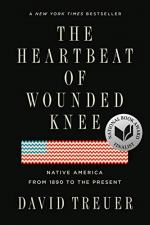|
This section contains 1,934 words (approx. 5 pages at 400 words per page) |

|
Summary
Indian military service in World War I took place against the backdrop of popular books and films about the vanishing Indian. Two complimentary ideologies were at work. The ideology of assimilation sought to integrate Native people into the dominant culture, and the ideology of the “real” Indian situated Native people entirely in the past.
Indians served in integrated units, which the Commissioner of Indian Affairs said would move them “toward civilization” (196). Some Indians were draft resisters. The Creek Draft Rebellion in 1918 erupted into gunfire. Its organizer, Ellen Perryman, eluded federal agents for months before her case was effectively dismissed.
The most decorated Canadian soldier was Ojibwe, Francis Pegahmagabow (Arrives Standing). In the U.S., Joseph Oklahombi, Choctaw, was the most highly decorated Indian soldier. He won the Silver Medal and Croix de Guerre, but was denied the Medal of Honor. Most...
(read more from the Part 3, Fighting Life: 1914-1945 Summary)
|
This section contains 1,934 words (approx. 5 pages at 400 words per page) |

|




